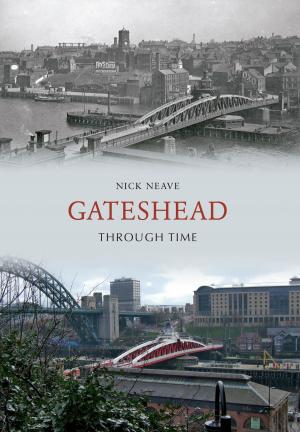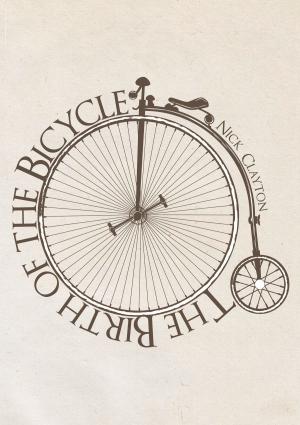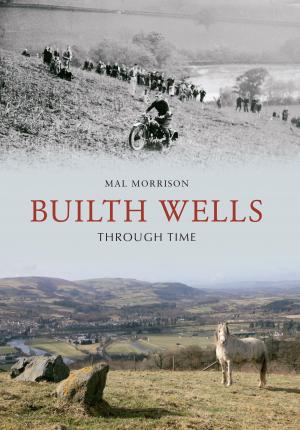There and Back Again
Restoring the Cromford Canal 1968-1988
Nonfiction, Reference & Language, Transportation, Ships & Shipbuilding, History| Author: | Simon Stoker | ISBN: | 9781445626024 |
| Publisher: | Amberley Publishing | Publication: | December 15, 2008 |
| Imprint: | Amberley Publishing | Language: | English |
| Author: | Simon Stoker |
| ISBN: | 9781445626024 |
| Publisher: | Amberley Publishing |
| Publication: | December 15, 2008 |
| Imprint: | Amberley Publishing |
| Language: | English |
The Cromford Canal ran 14.5 miles (23 km) from Cromford to the Erewash Canal in Derbyshire, England with a branch to Pinxton. Built by William Jessop with the assistance of Benjamin Outram, its alignment included four tunnels and 14 locks. From Cromford it ran south following the 300-foot (91 m) contour line along the east side of the valley of the Derwent to Ambergate, where it turned eastwards along the Amber valley. It turned sharply to cross the valley, crossing the river and the Ambergate to Nottingham road, by means of an aqueduct at Bullbridge, before turning towards Ripley. From there the Butterley Tunnel took it through to the Erewash Valley. From the tunnel it continued to Pye Hill, near Ironville, the junction for the branch to Pinxton, and then descended through fourteen locks to meet the Erewash Canal at Langley Mill. The Pinxton Branch became important as a route for Nottinghamshire coal, via the Erewash, to the River Trent and Leicester and was a terminus of the Mansfield and Pinxton Railway. In 1889, subsidence closed the Butterley Tunnel for four years, and further subsidence in 1900 closed the Tunnel permanently. Most of the canal was abandoned in 1944 with the exception of a half-mile stretch to Langley Mill which was abandoned in 1962. The Bullbridge Aqueduct was removed in 1968 when the Ripley road was widened. In 1985 the Codnor Park Reservoir was lowered by 6 feet (1.8 m) and a lock was removed as part of a flood prevention scheme. After closure, the canal was taken over by the British Waterways Board and sold to the Derbyshire County Council in 1974. Attempts are being made to restore the canal and about 5 miles of it remains in water. The towpath from Ambergate to Cromford is now a very popular walking route, with the Derwent Valley Line adjacent, Leawood Pumping House and the High Peak Junction of the Cromford and High Peak Railway.
The Cromford Canal ran 14.5 miles (23 km) from Cromford to the Erewash Canal in Derbyshire, England with a branch to Pinxton. Built by William Jessop with the assistance of Benjamin Outram, its alignment included four tunnels and 14 locks. From Cromford it ran south following the 300-foot (91 m) contour line along the east side of the valley of the Derwent to Ambergate, where it turned eastwards along the Amber valley. It turned sharply to cross the valley, crossing the river and the Ambergate to Nottingham road, by means of an aqueduct at Bullbridge, before turning towards Ripley. From there the Butterley Tunnel took it through to the Erewash Valley. From the tunnel it continued to Pye Hill, near Ironville, the junction for the branch to Pinxton, and then descended through fourteen locks to meet the Erewash Canal at Langley Mill. The Pinxton Branch became important as a route for Nottinghamshire coal, via the Erewash, to the River Trent and Leicester and was a terminus of the Mansfield and Pinxton Railway. In 1889, subsidence closed the Butterley Tunnel for four years, and further subsidence in 1900 closed the Tunnel permanently. Most of the canal was abandoned in 1944 with the exception of a half-mile stretch to Langley Mill which was abandoned in 1962. The Bullbridge Aqueduct was removed in 1968 when the Ripley road was widened. In 1985 the Codnor Park Reservoir was lowered by 6 feet (1.8 m) and a lock was removed as part of a flood prevention scheme. After closure, the canal was taken over by the British Waterways Board and sold to the Derbyshire County Council in 1974. Attempts are being made to restore the canal and about 5 miles of it remains in water. The towpath from Ambergate to Cromford is now a very popular walking route, with the Derwent Valley Line adjacent, Leawood Pumping House and the High Peak Junction of the Cromford and High Peak Railway.















